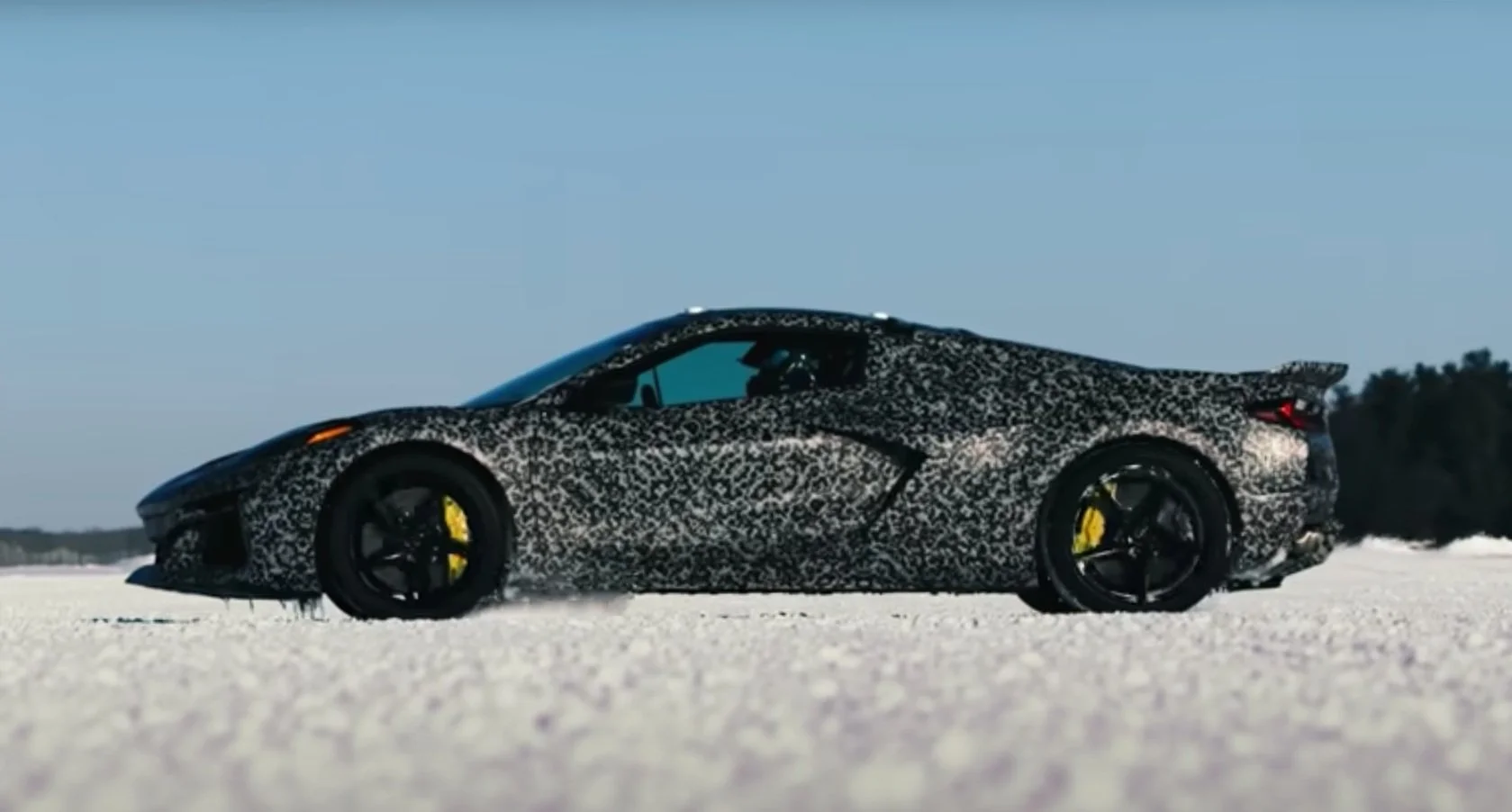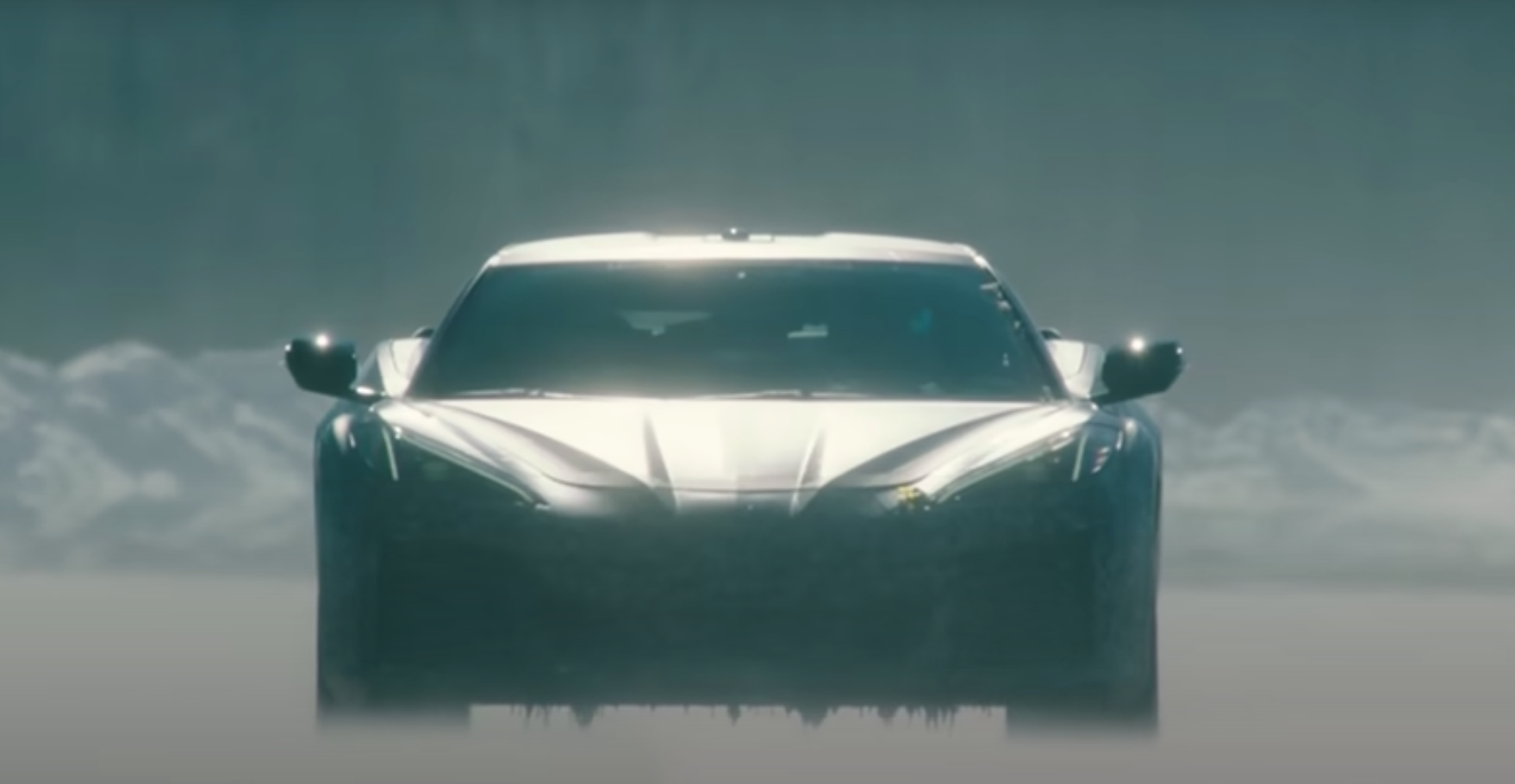Electrifying the C8 Corvette – Are Icons Losing Their Soul or Gaining Performance?
By Edward A. Sanchez – April 26, 2022
Just this week, Chevrolet released a YouTube video teasing its “electrified” C8 Corvette showing it doing a four-wheel burnout in the snow. Aside from the electrification aspect, this would make it the first all-wheel-drive production Corvette in the model’s history, a development significant in itself.
As we have explained many times here on The Watt Car, “electrified” can mean a number of different things, and has been twisted, liberally interpreted, and abused by many brands (Ahem! Toyota). In this case, it reportedly means hybrid (whether PHEV or HEV, we don’t yet know) and eventually, fully BEV.
As a full-throated advocate and fan of EVs, I see this generally as a positive development. But before I was an EV fan and owner, I was an ICE enthusiast, and I know the guiding philosophy that was sacrosanct in the development of many of these performance icons: light weight. In fact, Lotus founder Colin Chapman is famous for his turn-of-phrase of “adding lightness” when designing the brand’s vehicles. He may be spinning in his grave right now over the pending debut of the Eletre SUV, but I digress.
Expect the new “electrified” face of the Corvette to look a lot like the “traditional” C8.
In the context of the modern era of EVs, we’re still in the relatively early days, with the “modern era” of EVs kicking off in earnest around 2011 or ’12, with the introduction of the Nissan Leaf and Tesla Model S. The inescapable current truth is that EVs carry a weight penalty over their ICE equivalents, anywhere from 300 to over 1,000 lbs. (in the case of larger trucks and SUVs). Applied to dedicated performance cars, this is a sensitive subject, where the pursuit of light weight and agility is effectively a religion among many performance brands.
Batteries, meanwhile, are heavy. Much heavier than fuel tanks and liquid hydrocarbons, currently. To support that weight, many subsystems in the vehicle must also consequently be beefed up to handle the weight, which can result in a domino effect of added weight on multiple levels.
The “electrified” Corvette could be the first model bearing its name to crest the two-ton mark, and likely will. Even the Rimac Nevera, considered by many to be the high-water mark of performance EVs at the moment, waddles on to the scales at a relatively portly 4,740 lbs. The Tesla Model S Plaid, the high-water mark for EVs available to (wealthy) mere mortals, is “only” slightly heavier at 4,766 lbs., but hardly what would traditionally be considered “lightweight.”
Chevrolet teased its “electrified” all-wheel-drive Corvette in snowy conditions featuring huge power slides.
The discussion becomes even more sensitive and fraught when you talk about icons of light weight and performance as the Mazda MX-5 Miata (currently 2,332 lbs.) and the Porsche 718 Boxster (about 3,100 lbs.). A fully BEV Miata could very well tip the 3,000 lb. mark, and a full BEV 718 (which looks like it will be a reality) could be in the neighborhood of 3,500-3,700 lbs.
The purists may be howling with outrage, but the likely reaction by the rest of the motoring public may be: “So what?” My reaction is somewhere in between.
Yes, it is somewhat sad that the transition to battery electrics, with current technology, results in an inevitable weight gain. But considering the objective gains with the adoption of electrification of instantaneous and abundant torque, an approximate tripling of energy efficiency, and the consequent reduction of dependency on oil from often despotic or totalitarian regimes globally, I would say the tradeoff is worth it. And with the continued development of battery technology with an especially intense focus on energy density and weight reduction (even making the prospect of battery-electric aircraft a near-term reality), the weight penalty going forward will likely continue to become less and less of a factor in the years and decades ahead.
(Images courtesy Chevrolet)
- Store - Podcast - Facebook - Google News - Twitter -










